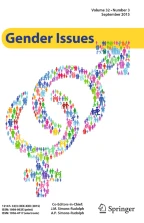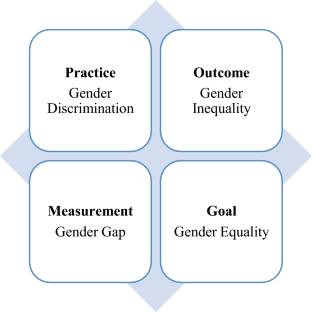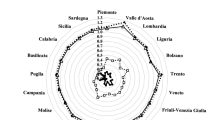Gender Inequality and Gender Gap: An Overview of the Indian Scenario

Gender inequality is pervasive in many societies, creating disparities between genders in terms of what they can accomplish and their access to opportunities. Achieving sustainable development necessitates providing equal chances to all, regardless of gender. Despite the remarkable economic progress India has attained, gender inequality is a major concern. Against this backdrop, the current study endeavours to comprehend gender inequality and analyse the extent of gender gap in India using secondary data. India’s performance in major gender-related indices paints a stark picture of gender inequality in the country. The study also finds that there exists gender gap in India concerning health, education, political representation and economic participation. Further, the study finds that female labour force participation has steadily declined over the years, raising concerns over the inclusiveness of India’s economic growth. The findings of the study provide valuable insights to policymakers to formulate effective policies that promote gender equality.
This is a preview of subscription content, log in via an institution to check access.
Access this article
Subscribe and save
Springer+ Basic
€32.70 /Month
- Get 10 units per month
- Download Article/Chapter or eBook
- 1 Unit = 1 Article or 1 Chapter
- Cancel anytime
Buy Now
Price includes VAT (France)
Instant access to the full article PDF.
Rent this article via DeepDyve


Gender Inequality: A Comparison of India and USA
Chapter © 2018

Gender Equality Index for Country Regions (GEICR)
Chapter © 2022

An Extended Regional Gender Gaps Index (eRGGI): Comparative Measurement of Gender Equality at Different Levels of Regionality
Article Open access 11 August 2021
Notes
The United Nations member states adopted the 17 SDGs in 2015 as part of the ‘2030 Agenda for Sustainable Development'. Achieving gender equality and empowering women and girls is the fifth goal of the SDGs.
The Gender Equality Index was developed by EIGE in 2013 to measure the progress of gender equality in the European Union.
The Social Institutions and Gender Index was developed by Organisation for Economic Co-operation and Development Centre in 2007 to measure discrimination against women in social institutions.
The Economist Intelligence Unit developed the Women’s Economic Opportunity Index in 2010 to measure the economic opportunities available for women.
Based on the HDI score, countries are classified into different categories: low human development (below 0.550), medium human development (0.550–0.699), high human development (0.700–0.799) and very high human development (above 0.799).
On the basis of Gender Development Index (GDI) scores, countries are divided into five categories according to the degree of deviation from gender parity in Human Development Index (HDI) values. Category 1 represents the countries that are closest to achieving gender parity, while Category 5 represents the countries that are farthest from parity.
A decrease in the GII score indicates that gender inequalities concerning reproductive health, empowerment and the labour market have reduced.
The Population Census of India is carried out decennially, and the most recent census was conducted in 2011. Due to the unprecedented circumstances posed by the COVID-19 pandemic, the 2021 census has been postponed. Hence 2011 census is the latest available evidence.
Patrilocality is the practice wherein the woman resides with her husband’s family post-marriage.
The Indian Parliament is the supreme law-making body in India.
The Panchayati Raj is the local self-government system in the villages in India.
References
- Barro, R. J. (2001). Human capital and growth. American Economic Review,91(2), 12–17. https://doi.org/10.1257/aer.91.2.12ArticleGoogle Scholar
- Batra, R., & Reio, T. G., Jr. (2016). Gender inequality issues in India. Advances in Developing Human Resources,18(1), 88–101. https://doi.org/10.1177/1523422316630651ArticleGoogle Scholar
- Bhalla, S., & Kaur, R. (2011). Labour force participation of women in India: Some facts. Some queries, LSE Asia research centre working paper, 40.
- Blumberg, R. L. (2005). Women’s economic empowerment as the magic potion of development. In 100th annual meeting of the American Sociological Association, August, Philadelphia.
- Census Report of India. (Various years). Ministry of Home Affairs, Government of India.
- Chaudhary, R., & Verick, S. (2014). Female labour force participation in India and beyond. ILO Asia- Pacific working paper series, New Delhi.
- Esteve-Volart, B. (2004). Gender discrimination and growth: Theory and evidence from India. LSE STICERD research paper no. DEDPS42.
- European Institute for Gender Equality. (2016). Glossary and thesaurus.https://eige.europa.eu/thesaurus/overview
- Gangopadhyay, J., & Ghosal, R. K. (2017). Gender inequality in Indian states-development of a gender discrimination index. Business Studies,26, 1–12. Google Scholar
- George, N., Britto, R., Abhinaya, R., Archana, M., Aruna, A. S., & Narayan, M. A. (2021). Child sex ratio-declining trend: Reasons and consequences. Indian Journal of Child Health,8(10), 349–351. ArticleGoogle Scholar
- Ghoshal, R., & Dhar, A. (2012). Child sex ratio and the politics of ‘enemisation.’ Economic and Political Weekly,47(49), 20–22. Google Scholar
- Human Development Report. (Various years). United Nations Development Programme.
- Jayachandran, S. (2015). The roots of gender inequality in developing countries. Annual Review of Economics,7(1), 63–88. https://doi.org/10.1146/annurev-economics-080614-115404ArticleGoogle Scholar
- Kabeer, N. (2005). Gender equality and women’s empowerment: A critical analysis of the third millennium development goal 1. Gender and Development,13(1), 13–24. https://doi.org/10.1080/13552070512331332273ArticleGoogle Scholar
- Klasen, S. (1999). Does gender inequality reduce growth and development? Evidence from cross-country regressions. Policy Research Report on Gender and Development, World Bank. Google Scholar
- Kulkarni, P. M. (2020). Sex ratio at birth in India: Recent trends and patterns. United Nations Population Fund-India. Google Scholar
- Mahanta, B., & Nayak, P. (2013). Gender inequality in north east India. PCC Journal of Economics and Commerce,7, 1–13. https://doi.org/10.2139/ssrn.2202044ArticleGoogle Scholar
- National Family Health Survey Report. (Various years). Ministry of Health and Family Welfare, Government of India.
- National Statistical Office. (2020). India—Household social consumption: Education, NSS 75th round schedule-25.2:July 2017–June 2018. http://14.139.60.153/handle/123456789/13670
- Okojie, C. E. (1994). Gender inequalities of health in the third world. Social Science and Medicine,39(9), 1237–1247. https://doi.org/10.1016/0277-9536(94)90356-5ArticleGoogle Scholar
- Permanyer, I. (2010). The measurement of multidimensional gender inequality: Continuing the debate. Social Indicators Research,95, 181–198. https://doi.org/10.1007/s11205-009-9463-4ArticleGoogle Scholar
- Press Information Bureau. (2021). Initiatives by Government for reducing Gender Gap in all aspects of Social, Economic and Political Life. Retrieved 7 February 2023 from https://pib.gov.in/PressReleasePage.aspx?PRID=1707475
- Prillaman, S. A. (2021). Strength in numbers: How women’s groups close India’s political gender gap. American Journal of Political Science,67(2), 1–21. https://doi.org/10.1111/ajps.12651ArticleGoogle Scholar
- Rammohan, A., & Vu, P. (2018). Gender inequality in education and kinship norms in India. Feminist Economics,24(1), 142–167. https://doi.org/10.1080/13545701.2017.1364399ArticleGoogle Scholar
- Razvi M., Roth G. (2004). Socio-economic development and gender inequality in India. In Proceedings of the academy of human resource development, academy of human resource development, Bowling Green, Ohio.
- Rustagi, P. (2004). Significance of gender-related development indicators: An analysis of Indian states. Indian Journal of Gender Studies,11(3), 291–343. https://doi.org/10.1177/097152150401100303ArticleGoogle Scholar
- Sen, G., & Östlin, P. (2008). Gender inequity in health: Why it exists and how we can change it. Global Public Health,3(1), 1–12. https://doi.org/10.1080/17441690801900795ArticleGoogle Scholar
- Smith, E., Kemmis, R. B., & Comyn, P. (2014). How can the expansion of the apprenticeship system in India create conditions for greater equity and social justice. Australian Journal of Adult Learning,54(3), 368–388. Google Scholar
- Sundaram, A., & Vanneman, R. (2008). Gender differentials in literacy in India: The intriguing relationship with women’s labour force participation. World Development,36(1), 128–143. https://doi.org/10.1016/j.worlddev.2007.02.017ArticleGoogle Scholar
- The Global Gender Gap Report. (Various years). World Economic Forum.
- Thomas, R. E. (2013). Gender inequality in modern India–scenario and solutions. IOSR Journal of Humanities and Social Science,13(3), 48–50. ArticleGoogle Scholar
- Thomas, V. P. (2020). Sex-selective abortions: The prevalence in India and its ramifications on sex trafficking. The Compass,1(7), 21–27. Google Scholar
- Tisdell, C. A. (2021). How has India’s economic growth and development affected its gender inequality? Journal of the Asia Pacific Economy,26(2), 209–229. https://doi.org/10.1080/13547860.2021.1917093ArticleGoogle Scholar
- Tiwari, A. K. (2013). Gender inequality in terms of health and nutrition in India: Evidence from national family health survey-3. Pacific Business Review International,5(1), 24–34. Google Scholar
- UNDP (United Nations Development Programme). (2022). Human Development Report 2021–22: Uncertain times, unsettled lives: Shaping our future in a transforming world. New York. Retrieved 31 January 2023 from https://hdr.undp.org/system/files/documents/global-report-document/hdr2021-22pdf_1.pdf
- United Nations Educational, Scientific and Cultural Organization [UNESCO]. (2013). UIS methodology for estimation of mean years of schooling. UNESCO Institute for Statistics. Retrieved 1 March 2023 from http://uis.unesco.org/sites/default/files/documents/uis-methodology-for-estimation-of-mean-years-of-schooling-2013-en_0.pdf
- United Nations Environment Programme. (2017). Closing gender gaps essential to sustainable development. Retrieved 1 January 2023 from https://www.unep.org/news-and-stories/story/closing-gender-gaps-essential-sustainable-development
- United Nations Population Division. (2020). Population division [Dataset: Sex Ratio]. Retrieved 31 January 2023 from https://population.un.org/dataportal/data/indicators/72/locations/356,900/start/2019/end/2022/table/pivotbylocation
- Warade, Y., Balsarkar, G., & Bandekar, P. (2014). A study to review sex ratio at birth and analyse preferences for the sex of the unborn. The Journal of Obstetrics and Gynaecology of India,64(1), 23–26. https://doi.org/10.1007/s13224-013-0473-4ArticleGoogle Scholar
- Waseem, M. (2015). Gender inequalities in education in India: Issues and challenges. International Journal of Research in Commerce and Management,6(2), 68–76. Google Scholar
- WEF (World Economic Forum). (2017). What is the gender gap (and why is it getting wider)? Retrieved 11 January 2023 from https://www.weforum.org/agenda/2017/11/the-gender-gap-actually-got-worse-in-2017/
- WEF (World Economic Forum). (2020). Global gender gap report 2020. Retrieved 31 January 2023 from https://www.weforum.org/reports/global-gender-gap-report-2021/
- WEF (World Economic Forum). (2021). Global gender gap report 2021. Retrieved 31 January 2023 from https://www.weforum.org/reports/global-gender-gap-report-2021/
- WEF (World Economic Forum). (2022a). Global gender gap report 2022. Retrieved 31 January 2023 from https://www.weforum.org/reports/global-gender-gap-report-2022/
- WEF (World Economic Forum). (2022b). This chart shows the growth of India's economy. Retrieved 1 March 2023 from https://www.weforum.org/agenda/2022/09/india-uk-fifth-largest-economy-world#:~:text=India's%20economy%20is%20forecast%20to,th%20highest%20GDP%20by%202027.
- World Bank. (2020a). Gender statistics [Dataset: Life Expectancy at birth]. Retrieved 31 January 2023 from https://databank.worldbank.org/source/gender-statistics
- World Bank. (2020b). Gender statistics [Dataset: Mortality Rate]. Retrieved 31 January 2023 from https://databank.worldbank.org/source/gender-statistics
- World Bank. (2021). Gender Statistics [Dataset: Labour force participation rate]. Retrieved 31 January 2023 from https://databank.worldbank.org/source/gender-statistics
Author information
Authors and Affiliations
- School of Management Studies, National Institute of Technology Calicut, Kozhikode, 673601, Kerala, India Issabella Jose
- School of Management Studies, National Institute of Technology Calicut, Kozhikode, 673601, Kerala, India Sunitha Sivaraman
- Issabella Jose



